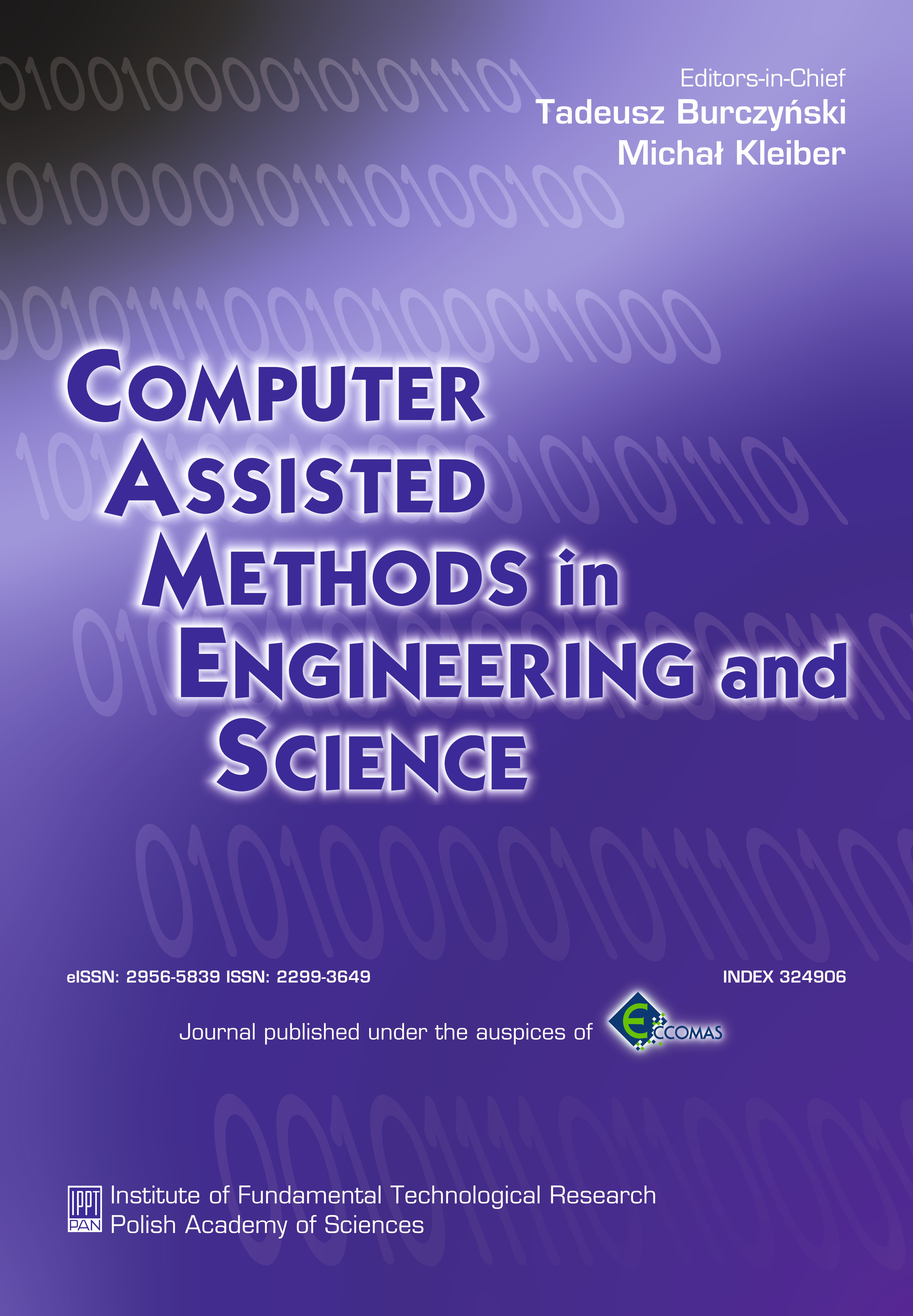Modelling of concrete cover degradation caused by rebar’s corrosion – multicomponent media theory approach
Abstract
This paper presents the model based on the theory of multicomponent media that allows modelling of rebar corrosion processes. The presented model extends and consolidates the dissertations that have been described in the papers [8-10]. The aim of the present work is a creation of the model consistent with the thermodynamics of multicomponent media with internal parameters, allowing description and numerical modelling of reinforced concrete structures degradation as the result of corrosion by using FEM.
Keywords:
theory of plasticity, corrosion of reinforced concrete, mass transport, concrete cover splittingReferences
[2] R.M. Bowen. Incompressible porous media model models by use of the theory of mixtures, Int. J. Eng. Sci., 18:1129–1148, 1980.
[3] R. Černý, P. Rovnaníková. Transport Processes in Concrete. Spoon Press, London and New York, 2002.
[4] W.F. Chen, H. Zhang. Structural Plasticity. Theory Problems and CAE Software. Springer-Verlag, New York, 1990.
[5] S. Chatterji. On the applicability of Fick’s second law to chloride ion migration through portland cement concreto. Cement and Concrete Research, 25(2): 299-303, 1995
[6] CEB-FIP model code. Comite Euro-International Du Beton, 1990.
[7] S.J. Pantazopoulou, K.D. Papoulia. Modeling cover-cracking due to reinforced corrosion in RC structures. Journal of Engineering Mechanics, 127(4): 342–351, 2001.
[8] T. Krykowski. Computational model of corrosion damage in the reinforced concrete. Archives of Civil Engineering, 52(2): 319–337, 2006.
[9] T. Krykowski, A. Zybura. Modeling of corroding rebar interaction with concrete cover. Monography REPROCITY Research and Training on Restoration and Protection of the City Environment in Industrial Regions. Faculty of Civil Engineering, The Silesian University of Technology, Gliwice, 2008.
[10] T. Krykowski, A. Zybura. FEM modeling of concrete cover degradation caused by rebars corrosion in reinforced concrete. Selected Topics in Mechanics of the Inhomogeneous Media. University of Zielona Góra (in print).
[11] J. Kubik. Thermodiffusion flows in a solid with a dominant constituent. Mitteilungen aus dem Institut fur Mechanik Nr. 44, Ruhr-Universitat Bochum, 1985.
[12] J.Lemaitre, R.Desmorat. Engineering Damage Mechanics, Ductile, Creep, Fatigue and Brittle Failures. Springer-Verlag, 2005.
[13] T. Liu, R.W. Weyers. Modeling the dynamic corrosion process in chloride contaminated concreto structures. Cement and Concrete Research, 28(3): 365–379, 1998.
[14] G.T. Mase, G.E. Mase. Continuum Mechanics for Engineers. CRC Press, Boca Raton – London – New York –Washington D. C., 1999.
[15] PN-B-03264:2002. Konstrukcje żelbetowe i sprzężone. Obliczenia statyczne i projektowanie. Polski Komitet Normalizacyjny, 2002.
[16] J.C. Simo, T.J.R. Hughes. Computational Inelasticity. Springer-Verlag, 1998.
[17] Z. Ściślewski. Ochrona konstrukcji żelbetowych. Arkady, Warszawa, 1999.
[18] G. Wieczorek. Korozja zbrojenia inicjowana przez chlorki i karbonatyzację otuliny. Dolnośląskie Wydawnictwo Edukacyjne, Wrocław, 2002.
[19] K. Wilmanski. Foundations of Phenomenological Thermodynamics. PSP, Warsaw, 1974.
[20] A. Zybura. Analysis of chloride migration in concrete based on multicomponent medium theory. Archives of Civil Engineering, 53(1): 131–150, 2007.


